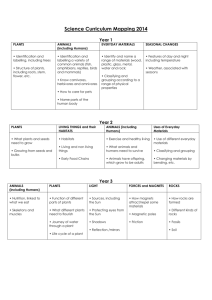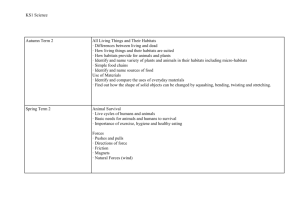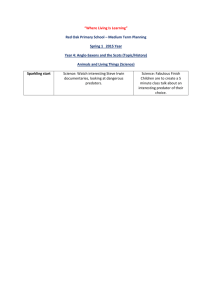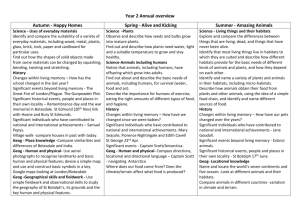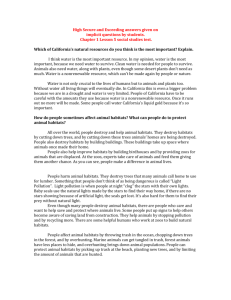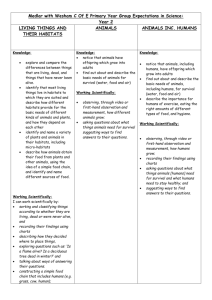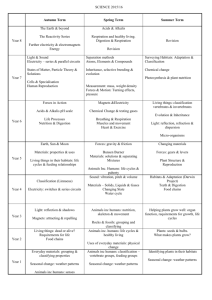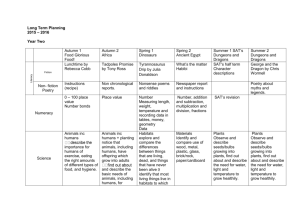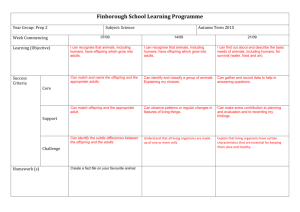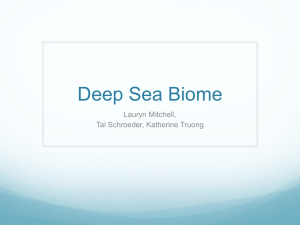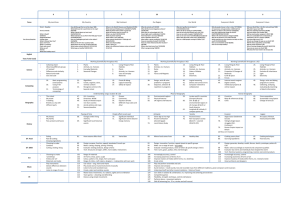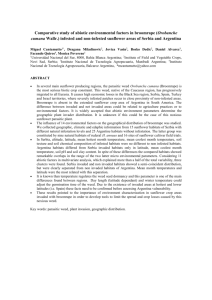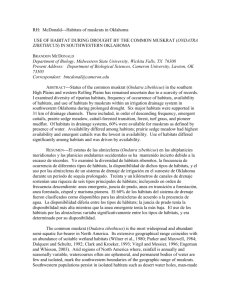“Where Living Is Learning” Red Oak Primary School – Medium Term
advertisement
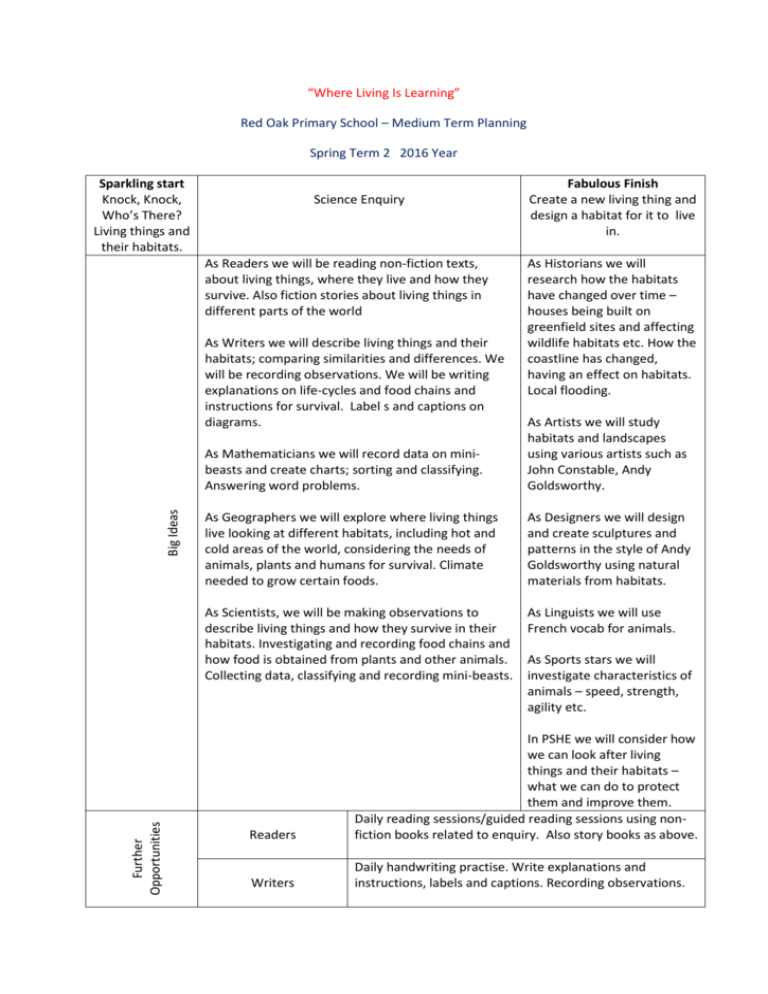
“Where Living Is Learning” Red Oak Primary School – Medium Term Planning Spring Term 2 2016 Year Sparkling start Knock, Knock, Who’s There? Living things and their habitats. Science Enquiry As Readers we will be reading non-fiction texts, about living things, where they live and how they survive. Also fiction stories about living things in different parts of the world Further Opportunities Big Ideas As Writers we will describe living things and their habitats; comparing similarities and differences. We will be recording observations. We will be writing explanations on life-cycles and food chains and instructions for survival. Label s and captions on diagrams. Fabulous Finish Create a new living thing and design a habitat for it to live in. As Historians we will research how the habitats have changed over time – houses being built on greenfield sites and affecting wildlife habitats etc. How the coastline has changed, having an effect on habitats. Local flooding. As Mathematicians we will record data on minibeasts and create charts; sorting and classifying. Answering word problems. As Artists we will study habitats and landscapes using various artists such as John Constable, Andy Goldsworthy. As Geographers we will explore where living things live looking at different habitats, including hot and cold areas of the world, considering the needs of animals, plants and humans for survival. Climate needed to grow certain foods. As Designers we will design and create sculptures and patterns in the style of Andy Goldsworthy using natural materials from habitats. As Scientists, we will be making observations to describe living things and how they survive in their habitats. Investigating and recording food chains and how food is obtained from plants and other animals. Collecting data, classifying and recording mini-beasts. As Linguists we will use French vocab for animals. As Sports stars we will investigate characteristics of animals – speed, strength, agility etc. Readers In PSHE we will consider how we can look after living things and their habitats – what we can do to protect them and improve them. Daily reading sessions/guided reading sessions using nonfiction books related to enquiry. Also story books as above. Writers Daily handwriting practise. Write explanations and instructions, labels and captions. Recording observations. Learning Attitudes Curriculum Drivers Communication Mathematician Partner discussion, teamwork, taking turns and listening, sharing ideas and giving opinions. Using and applying skills learnt in MMS. Knowledge of the world Possibilities/Aspirations Community We will develop an understanding of how important habitats are to the survival of living things. Explore habitats in different parts of the world and their similarities/differences. We will think about how we can look after our environment and make it a better place to live in. Caring for living things. Become a zoologist/environmentalist. We will visit our local habitats – parks, beach, woods, zoos. Norwich Castle for art/sculpture exhibitions? We will demonstrate our five learning behaviours.

